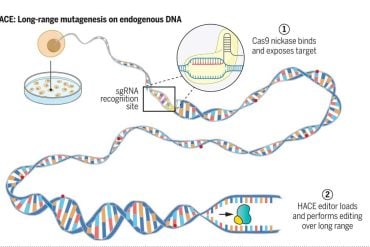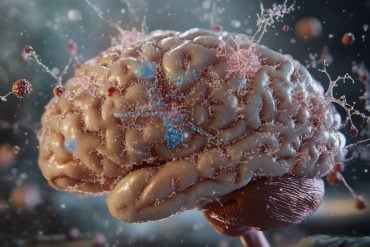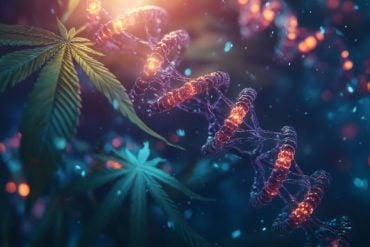Summary: New research uncovers how mitophagy, the cellular recycling of damaged mitochondria, changes dynamically in the aging mammalian brain. In memory-related cells, mitophagy rises in midlife but declines sharply in old age, while motor-related brain cells show increased mitophagy with age.
The study also highlights that aging lysosomes lose acidity, mirroring changes seen in Alzheimer’s disease models. These findings challenge assumptions about mitophagy universally declining with age and position midlife as a pivotal period for interventions targeting neurodegenerative diseases.
Key Facts:
- Mitophagy dynamics vary across brain regions and cell types during aging.
- Aging lysosomes lose acidity, linking normal aging to Alzheimer’s-like changes.
- Midlife is a critical period for maintaining healthy brain function.
Source: University of Helsinki
Mitochondria, the powerhouses of our cells, play an essential role in maintaining cellular health. When damaged, they are removed through a recycling process called mitophagy, which is crucial for the function of long-lived cells, especially in the brain.
Impaired mitophagy has been strongly associated with neurodegenerative disorders like Alzheimer’s and Parkinson’s disease, making it a critical focus for drug discovery and therapeutic innovation.

New research from the McWilliams lab at the University of Helsinki, spearheaded by doctoral researcher Anna Rappe, MSc, reveals a changing and unexpected landscape of mitophagy across in different brain cell types during the aging process.
For example, mitophagy levels increased in a specialized mouse brain region responsible for movement as the animals aged, while in memory-related brain cells, mitophagy first rose and then sharply declined in old age.
These findings identify midlife as a key inflection point for healthy brain aging, offering novel insights into the molecular mechanisms that sustain mammalian brain function.
Another key finding of the study was that some lysosomes, the structures responsible for breaking down cellular waste, lose acidity as the brain ages. This exciting observation parallels changes observed in Alzheimer’s disease models, suggesting that the processes seen in normal aging might be exacerbated in the development of neurodegenerative conditions.
The results challenge previous assumptions that mitophagy simply decreases with age across all species, showing that in longer-lived mammals, this special recycling process is much more dynamic and complex.
Previous studies, often using short-lived models like yeast and worms, suggested that mitophagy levels decline over a lifetime, marking it as a hallmark of aging. However, studying this process in the aging mammalian brain has been challenging due to the complexity of brain tissue and the limitations of traditional research methods.
Only recently have the tools needed to track mitophagy across different tissues and organs in mammals become available.
The McWilliams Lab employed cutting-edge tools in mouse genetics, optobiology, neuroscience, and advanced imaging to track mitophagy over time in different brain cell types.
Their results highlight the importance of developing new perspectives when studying brain aging in longer-lived species, with midlife emerging as a critical period for preserving brain function.
Implications for understanding brain aging in health and disease
Associate Professor Thomas McWilliams, who supervised the study, contextualized these findings:
“There is no doubt that mitophagy decreases in shorter-lived species. While we share important genes and mechanisms, the tissues of longer-lived mammals have evolved under distinct pressures to handle different challenges.
“Our work reveals that mitophagy is highly dynamic in the aging mouse brain and suggests midlife is a crucial period for mammalian brain health.”
He added that while the field has made progress in understanding neurodegenerative diseases, the high failure rate of current therapies underscores the need for new approaches.
“There is still much to do, but we are excited by these new findings that reshape our understanding of brain aging. Together with our clinical collaborators, we are committed to advancing this research towards more human-centered applications.
“We hope our current results will give companies and translational researchers a valuable roadmap to help accelerate the development of new therapies for brain disease.”
Further information:
The study was published in The EMBO Journal and has also been well received internationally, with Anna Rappe achieving awards at several meetings, including the 2024 Nordic Autophagy Society Conference (the EMBO Journal Best Poster Prize, Iceland), the 2024 Anatomici Fenniae Symposium (Joint best prize – Helsinki, Finland), and previously at the 2022 FENS Forum (Paris, FR) — Europe’s largest neuroscience conference, when this work started during her MSc in the McWilliams lab (best poster prize).
Earlier this year, McWilliams was awarded 1.12 million EUR from the Jane and Aatos Erkko Foundation to conduct further groundbreaking research into human-specific autophagy mechanisms.
The study was led by Associate Professor Thomas McWilliams and his team at the University of Helsinki, with important collaborative contributions from Dr. Helena Vihinen and Dr. Eija Jokitalo at the HiLIFE Electron Microscopy Unit and Dr. Antti Hassinen from the FIMM HCA Unit.
About this aging and neuroscience research news
Author: Pia Purra
Source: University of Helsinki
Contact: Pia Purra – University of Helsinki
Image: The image is credited to Neuroscience News
Original Research: Open access.
“Longitudinal autophagy profiling of the mammalian brain reveals sustained mitophagy throughout healthy aging” by Anna Rappe et al. EMBO Journal
Abstract
Longitudinal autophagy profiling of the mammalian brain reveals sustained mitophagy throughout healthy aging
Mitophagy neutralizes mitochondrial damage, thereby preventing cellular dysfunction and apoptosis. Defects in mitophagy have been strongly implicated in age-related neurodegenerative disorders such as Parkinson’s and Alzheimer’s disease.
While mitophagy decreases throughout the lifespan of short-lived model organisms, it remains unknown whether such a decline occurs in the aging mammalian brain—a question of fundamental importance for understanding cell type- and region-specific susceptibility to neurodegeneration.
Here, we define the longitudinal dynamics of basal mitophagy and macroautophagy across neuronal and non-neuronal cell types within the intact aging mouse brain in vivo.
Quantitative profiling of reporter mouse cohorts from young to geriatric ages reveals cell- and tissue-specific alterations in mitophagy and macroautophagy between distinct subregions and cell populations, including dopaminergic neurons, cerebellar Purkinje cells, astrocytes, microglia and interneurons.
We also find that healthy aging is hallmarked by the dynamic accumulation of differentially acidified lysosomes in several neural cell subsets.
Our findings argue against any widespread age-related decline in mitophagic activity, instead demonstrating dynamic fluctuations in mitophagy across the aging trajectory, with strong implications for ongoing theragnostic development.






